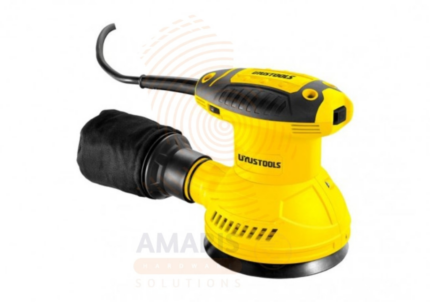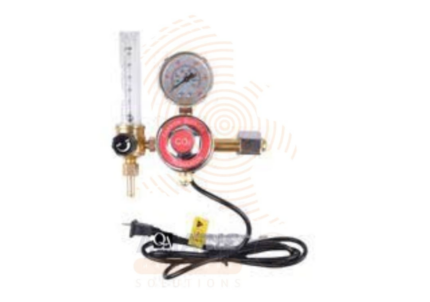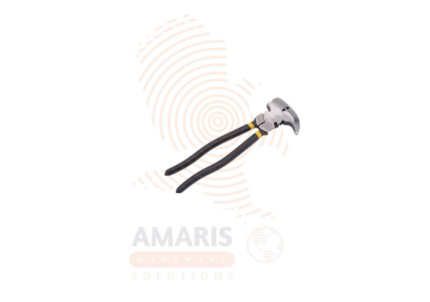

Utility Knife Blade
$12.46 Original price was: $12.46.$11.84Current price is: $11.84.
A utility knife blade refers to a sharp, replaceable cutting component used in a utility knife. These blades are typically made of durable materials such as high-carbon steel or ceramic and are designed to be versatile and efficient for various cutting tasks. Utility knife blades are characterized by their sharpness, durability, and often feature a pointed tip for precision cutting. They are commonly used in construction, crafts, and household applications for tasks such as cutting cardboard, rope, plastic, and other materials. The blades are usually interchangeable, allowing users to replace them when they become dull, ensuring continued effectiveness and safety.
Table of Contents
ToggleUtility Knife Blade
Uses
-
Box and Carton Cutting:
-
Opening and breaking down cardboard boxes.
-
Trimming and cutting packaging materials.
-
-
Construction and Carpentry:
-
Cutting drywall for installation.
-
Trimming insulation.
-
Shaping and cutting various construction materials.
-
-
Crafts and Hobbies:
-
Precision cutting in arts and crafts projects.
-
Trimming paper, fabric, and other crafting materials.
-
-
Flooring Installation:
-
Cutting and trimming flooring materials, such as linoleum or carpet.
-
-
DIY Home Projects:
-
General-purpose cutting for various household repairs and projects.
-
-
Landscaping and Gardening:
-
Trimming and cutting small branches.
-
Opening bags of soil or mulch.
-
-
Stripping Wire:
-
Stripping insulation from electrical wires.
-
-
Emergency Situations:
-
Cutting seatbelts in emergency situations.
-
Opening packaging quickly in emergency response scenarios.
-
-
Precision Cutting:
-
Making precise cuts in materials like foam, rubber, or plastic.
-
-
Leatherworking:
-
Cutting and shaping leather in crafting or repair projects.
-
-
Model Making:
-
Precise cutting of materials for model building.
-
-
Household Repairs:
-
Cutting materials for home repairs or installations.
-
Safety Precautions
-
Wear Protective Gear:
-
Use safety gloves to protect your hands from accidental cuts.
-
Consider wearing safety glasses or goggles to shield your eyes from any debris.
-
-
Inspect the Blade:
-
Before use, inspect the utility knife blade for any damage, such as chips or cracks. Replace it if necessary.
-
Ensure the blade is securely and properly installed in the knife.
-
-
Choose the Right Blade:
-
Select the appropriate blade for the task at hand. Different blades are designed for specific materials and cutting purposes.
-
-
Cut Away from Your Body:
-
Always cut away from your body and other people. This minimizes the risk of injury if the blade slips.
-
-
Maintain a Stable Surface:
-
Work on a stable and flat surface to prevent slips or accidents.
-
-
Secure the Material:
-
Ensure the material you are cutting is secure and won't move during the cutting process. This helps maintain control over the knife.
-
-
Use Controlled Force:
-
Apply controlled and even pressure when cutting. Avoid using excessive force, as it can lead to loss of control.
-
-
Avoid Awkward Positions:
-
Do not put yourself in awkward positions when cutting. Maintain a comfortable and stable posture.
-
-
Keep Fingers Away from the Blade:
-
Always keep your fingers and other body parts away from the path of the blade.
-
-
Retract the Blade When Not in Use:
-
Retract the blade into the handle when the utility knife is not in use to minimize the risk of accidental cuts.
-
-
Use the Right Tool for the Job:
-
Do not use a utility knife for tasks it is not designed for. Use specialized tools for specific cutting applications.
-
-
Dispose of Blades Properly:
-
When replacing blades, dispose of used blades in a designated container or use a blade disposal system. Do not throw them in the regular trash where they can cause injuries.
-
-
Work in Well-Lit Areas:
-
Ensure you have adequate lighting to see the cutting area clearly, reducing the chance of mistakes.
-
-
Take Breaks:
-
If you are using a utility knife for an extended period, take breaks to avoid fatigue and maintain focus
-


 Acrylic Sealants
Acrylic Sealants Construction Adhesives
Construction Adhesives Double-Sided Tape
Double-Sided Tape Duct Tape
Duct Tape Electrical Tape
Electrical Tape Epoxy & Resins
Epoxy & Resins Masking Tape
Masking Tape
 Automotive Wrenches & Socket Sets
Automotive Wrenches & Socket Sets Battery Chargers & Jump Starters
Battery Chargers & Jump Starters Car Jacks & Stands
Car Jacks & Stands Car Wash & Detailing Products
Car Wash & Detailing Products Diagnostic Tools
Diagnostic Tools Tire Inflators
Tire Inflators Vehicle Lighting
Vehicle Lighting Oil & Lubricants
Oil & Lubricants
 Adhesives & Sealants
Adhesives & Sealants Bricks & Blocks
Bricks & Blocks Cement & Concrete
Cement & Concrete Drywall & Plaster
Drywall & Plaster Flooring (Tiles, Wood, Laminate)
Flooring (Tiles, Wood, Laminate) Lumber & Plywood
Lumber & Plywood Paints, Primers & Coatings
Paints, Primers & Coatings Insulation Materials
Insulation Materials Roofing Materials
Roofing Materials
 Circuit Breakers
Circuit Breakers Electrical Cables & Wires
Electrical Cables & Wires Switches & Sockets
Switches & Sockets Fuses & Relays
Fuses & Relays Connectors & Terminals
Connectors & Terminals Electrical Boxes & Panels
Electrical Boxes & Panels Conduit & Fittings
Conduit & Fittings Lighting Fixtures & Bulbs
Lighting Fixtures & Bulbs Extension Cords & Power Strips
Extension Cords & Power Strips
 Anchors
Anchors Bolts
Bolts Clips & Clamps
Clips & Clamps Screws
Screws Nuts
Nuts Washers
Washers Rivets
Rivets Nails
Nails Threaded Rods
Threaded Rods
 Hammers
Hammers Measuring Tools (Tapes, Levels, Calipers)
Measuring Tools (Tapes, Levels, Calipers) Screwdrivers
Screwdrivers Pliers & Cutters
Pliers & Cutters Saws & Blades
Saws & Blades Chisels & Punches
Chisels & Punches Allen Keys & Hex Keys
Allen Keys & Hex Keys Ratchets & Socket Sets
Ratchets & Socket Sets Wrenches & Spanners
Wrenches & Spanners
 Power Tool Accessories (Blades, Bits, Discs)
Power Tool Accessories (Blades, Bits, Discs) Rotary Tools
Rotary Tools Saws (Circular, Jigsaw, Reciprocating)
Saws (Circular, Jigsaw, Reciprocating) Drills & Drivers
Drills & Drivers Grinders & Sanders
Grinders & Sanders Heat Guns
Heat Guns Nail Guns
Nail Guns Impact Wrenches
Impact Wrenches Batteries & Chargers
Batteries & Chargers
 Pipes & Fittings (PVC, Copper, PEX)
Pipes & Fittings (PVC, Copper, PEX) Plumbing Tools
Plumbing Tools Pumps & Motors
Pumps & Motors Sealants & Adhesives for Plumbing
Sealants & Adhesives for Plumbing Valves & Taps
Valves & Taps Water Heaters
Water Heaters Drainage Systems
Drainage Systems Faucets & Fixtures
Faucets & Fixtures Hoses & Tubing
Hoses & Tubing
 Hinges & Latches
Hinges & Latches Hooks & Brackets
Hooks & Brackets Window Hardware
Window Hardware Chains & Cables
Chains & Cables Casters & Wheels
Casters & Wheels Shelving & Storage Systems
Shelving & Storage Systems Door Handles & Locks
Door Handles & Locks Drawer Slides & Cabinet Hardware
Drawer Slides & Cabinet Hardware
 Personal Protective Equipment (PPE)
Personal Protective Equipment (PPE) Respirators & Masks
Respirators & Masks Safety Glasses
Safety Glasses Safes
Safes Security Cameras
Security Cameras Gloves
Gloves Helmets
Helmets Ear Protection
Ear Protection Fire Safety Equipment
Fire Safety Equipment Locks & Padlocks
Locks & Padlocks Motion Sensors & Alarms
Motion Sensors & Alarms
 Garden Fencing
Garden Fencing Garden Furniture Hardware
Garden Furniture Hardware Lawn Mowers
Lawn Mowers Trimmers & Edgers
Trimmers & Edgers Shovels & Spades
Shovels & Spades Rakes & Hoes
Rakes & Hoes Pruning Shears & Loppers
Pruning Shears & Loppers Watering Systems (Hoses, Sprinklers, Nozzles)
Watering Systems (Hoses, Sprinklers, Nozzles)
 Interior Paints
Interior Paints Paint Brushes & Rollers
Paint Brushes & Rollers Paint Strippers & Thinners
Paint Strippers & Thinners Paint Trays & Accessories
Paint Trays & Accessories Exterior Paints
Exterior Paints Spray Paints
Spray Paints Primers & Undercoats
Primers & Undercoats Varnishes & Stains
Varnishes & Stains
 Gaskets & Seals
Gaskets & Seals Hydraulic Fittings
Hydraulic Fittings Industrial Fasteners
Industrial Fasteners Industrial Hoses
Industrial Hoses Lubricants & Greases
Lubricants & Greases Metal Sheets & Bars
Metal Sheets & Bars Bearings & Bushings
Bearings & Bushings Belts & Pulleys
Belts & Pulleys
 HVAC Filters
HVAC Filters Insulation for HVAC
Insulation for HVAC Air Conditioners
Air Conditioners Refrigerants
Refrigerants Ventilation Ducts & Fittings
Ventilation Ducts & Fittings Thermostats & Controllers
Thermostats & Controllers Fans & Blowers
Fans & Blowers
 Pegboards & Hooks
Pegboards & Hooks Shelving Units
Shelving Units Storage Bins & Containers
Storage Bins & Containers Toolboxes & Tool Chests
Toolboxes & Tool Chests Workbenches
Workbenches Drawer Organizers
Drawer Organizers Labeling Supplies
Labeling Supplies
 Welding Accessories (Clamps, Brushes)
Welding Accessories (Clamps, Brushes) Welding Electrodes & Rods
Welding Electrodes & Rods Welding Helmets & Gloves
Welding Helmets & Gloves Welding Machines
Welding Machines Soldering Irons & Stations
Soldering Irons & Stations Flux & Solder Wire
Flux & Solder Wire
 Generator Accessories
Generator Accessories Inverters
Inverters Portable Generators
Portable Generators Power Inverters
Power Inverters Transfer Switches
Transfer Switches Diesel & Gasoline Generators
Diesel & Gasoline Generators
 Transport Equipment: Carts, Dollies, and Hand Trucks
Transport Equipment: Carts, Dollies, and Hand Trucks Storage Solutions: Pallets, Racks, and Containers
Storage Solutions: Pallets, Racks, and Containers Lifting Equipment: Hoists, Cranes, and Jacks
Lifting Equipment: Hoists, Cranes, and Jacks Conveyors and Accessories: Belts and Rollers
Conveyors and Accessories: Belts and Rollers










